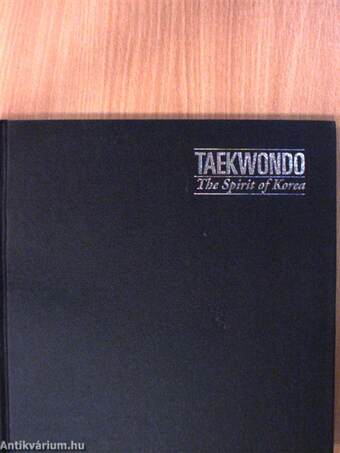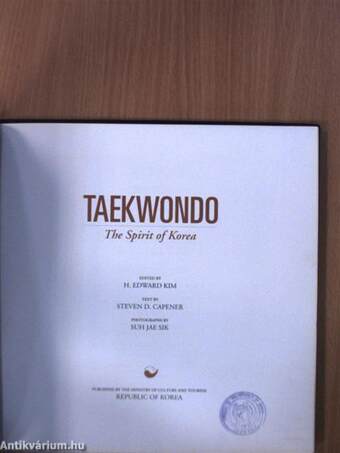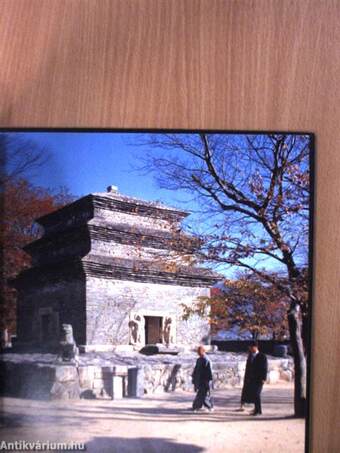1.076.906
kiadvánnyal nyújtjuk Magyarország legnagyobb antikvár könyv-kínálatát

VISSZA
A TETEJÉRE
JAVASLATOKÉszre-
vételek
Taekwondo
The Spirit of Korea
| Kiadó: | Ministry of Culture and Tourism, Republic of Korea |
|---|---|
| Kiadás helye: | Szedzsong |
| Kiadás éve: | |
| Kötés típusa: | Fűzött keménykötés |
| Oldalszám: | 139 oldal |
| Sorozatcím: | |
| Kötetszám: | |
| Nyelv: | Angol |
| Méret: | 27 cm x 27 cm |
| ISBN: | 89-7820-058-3 |
| Megjegyzés: | Színes fotókkal. |
naponta értesítjük a beérkező friss
kiadványokról
naponta értesítjük a beérkező friss
kiadványokról
Fülszöveg
TAEKWONDO
The Spirit of Korea
Interest in Asia and things Asian began to build in the West in the
1950s, and with ongoing globalization will, no doubt, continue to grow.
This interest was especially fuelled by the introduction of Asian martial
arts to the West from Korea, Japan, and China. Many of these forms of
martial arts experienced brief periods of great popularity before fading
away, as happened with the ninjitsu craze of the 1980s.
Among the possible reasons for the loss of interest in certain martial arts
is that they lacked either the necessary combination of modernity and
traditionalism or that their techniques were too esoteric and impractical
and could not be tested against one another.
The fact that taekwondo has continued to grow in popularity while
many other martial arts have become more and more obscure is due to its
ability to maintain its traditional Asian character while at the same time
developing dynamic modern techniques.
The reasons for... Tovább
Fülszöveg
TAEKWONDO
The Spirit of Korea
Interest in Asia and things Asian began to build in the West in the
1950s, and with ongoing globalization will, no doubt, continue to grow.
This interest was especially fuelled by the introduction of Asian martial
arts to the West from Korea, Japan, and China. Many of these forms of
martial arts experienced brief periods of great popularity before fading
away, as happened with the ninjitsu craze of the 1980s.
Among the possible reasons for the loss of interest in certain martial arts
is that they lacked either the necessary combination of modernity and
traditionalism or that their techniques were too esoteric and impractical
and could not be tested against one another.
The fact that taekwondo has continued to grow in popularity while
many other martial arts have become more and more obscure is due to its
ability to maintain its traditional Asian character while at the same time
developing dynamic modern techniques.
The reasons for taekwondo s success internationally, its dynamism and
ability to adapt to modern society while maintaining close ties with its
Korean roots, are also the reasons that taekwondo will continue to be one of
the main Asian martial sports practiced throughout the world in the future.
This book is the story of taekwondo, and to some extent the story of
Korea. It is an intriguing story and one which continues to be written as
taekwondo grows and evolves as perhaps the best known aspect of
Korean culture internationally. Vissza
Témakörök
- Idegennyelv > Idegennyelvű könyvek > Angol > Művelődéstörténet
- Idegennyelv > Idegennyelvű könyvek > Angol > Sport > Küzdősportok
- Művelődéstörténet > Kultúra > Története
- Művelődéstörténet > Életmód > Egyéb
- Művelődéstörténet > Átfogó művek, tanulmányok
- Sport > Sporttörténet > Egyéb
- Sport > Küzdősportok > Egyéb
Steven D. Capener
Steven D. Capener műveinek az Antikvarium.hu-n kapható vagy előjegyezhető listáját itt tekintheti meg: Steven D. Capener könyvek, művekMegvásárolható példányok
Nincs megvásárolható példány
A könyv összes megrendelhető példánya elfogyott. Ha kívánja, előjegyezheti a könyvet, és amint a könyv egy újabb példánya elérhető lesz, értesítjük.









